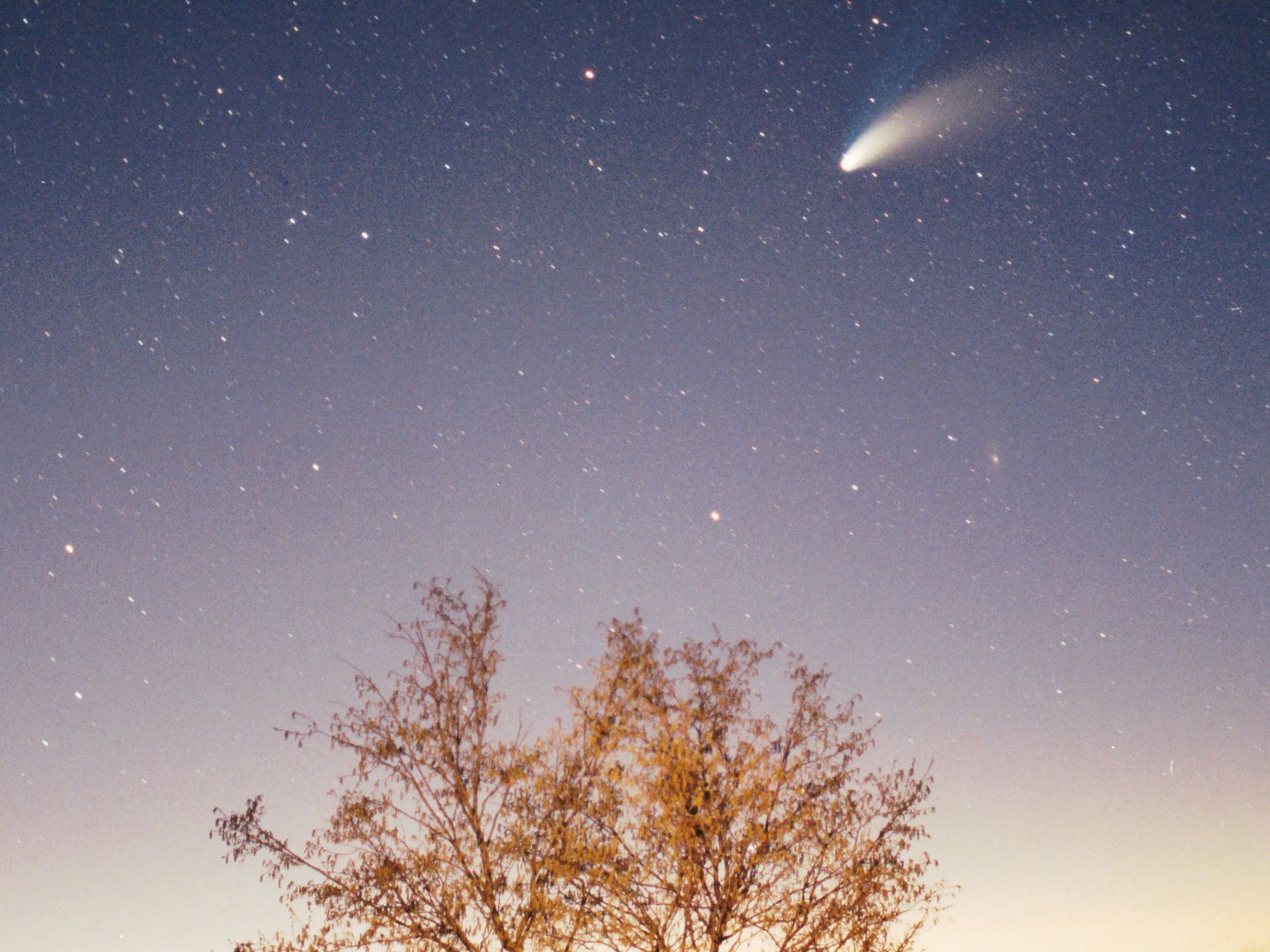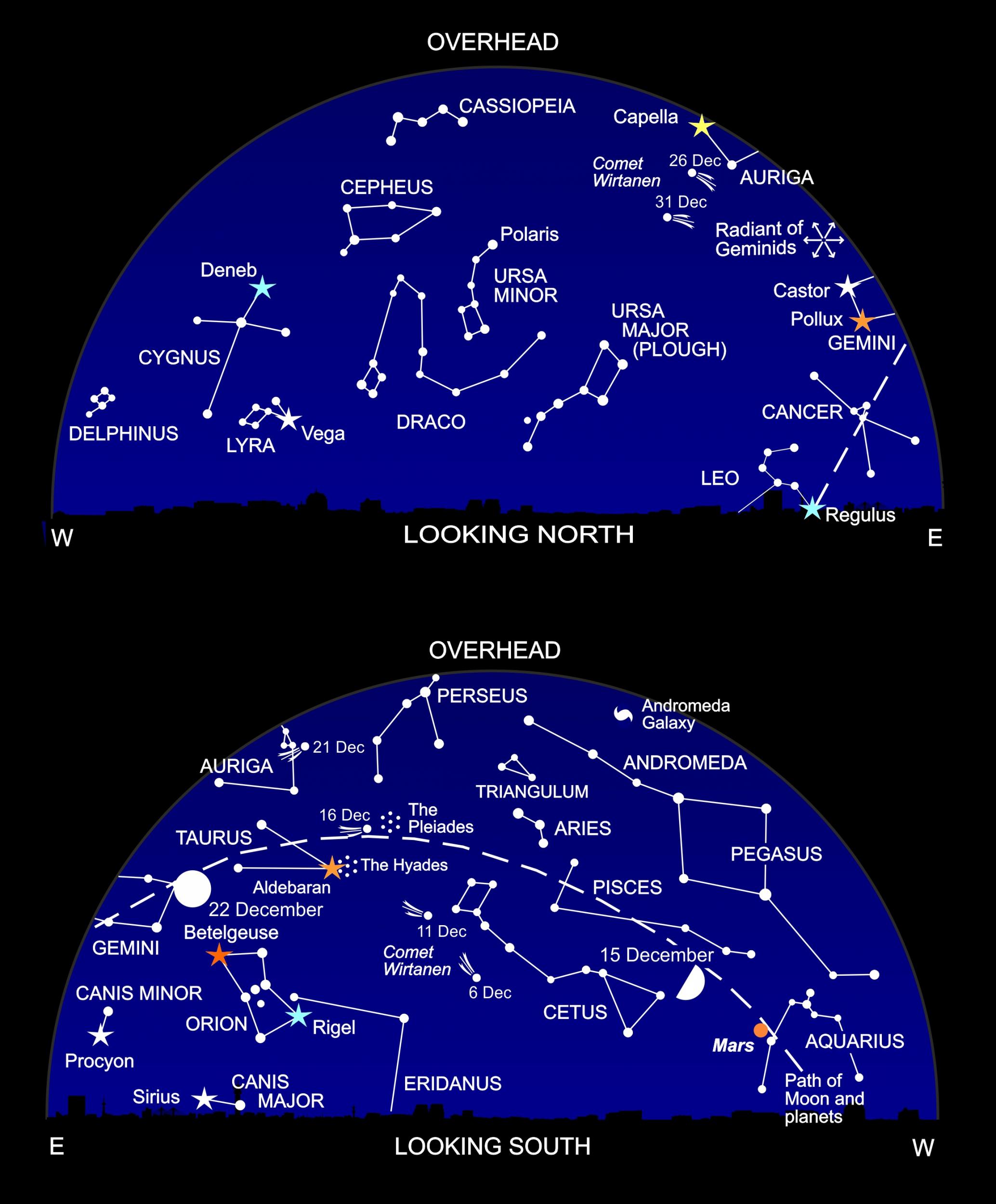Stargazing December: Comet Wirtanen climbs the night sky
In the middle of the month, a celestial visitor passes the Sun and Earth, and we’re treated to an extraterrestrial fireworks display as the Earth sweeps through debris shed by an asteroid called Phaeton

Your support helps us to tell the story
From reproductive rights to climate change to Big Tech, The Independent is on the ground when the story is developing. Whether it's investigating the financials of Elon Musk's pro-Trump PAC or producing our latest documentary, 'The A Word', which shines a light on the American women fighting for reproductive rights, we know how important it is to parse out the facts from the messaging.
At such a critical moment in US history, we need reporters on the ground. Your donation allows us to keep sending journalists to speak to both sides of the story.
The Independent is trusted by Americans across the entire political spectrum. And unlike many other quality news outlets, we choose not to lock Americans out of our reporting and analysis with paywalls. We believe quality journalism should be available to everyone, paid for by those who can afford it.
Your support makes all the difference.We have a Christmas comet! But don’t hold your breath. Comets are notoriously unpredictable. In the words of seasoned Canadian discoverer of comets David Levy: “Comets are like cats: they have tails, and do precisely what they want.”
You may remember the sensational Comet Hale-Bopp from 1997. This one almost certainly won’t match its performance. But... you never know.
A lot of people confuse comets with meteors: shooting stars. The latter are debris shed from comets; sand-sized grains that plunge into Earth’s atmosphere, energising the heavens as they burn up in seconds.
Comets are much more stately creatures that drift slowly through sky from night to night. They’re known in the trade as “dirty snowballs”. Left-over debris from the formation of the Solar System, they originate in a huge spherical cloud – the Öpik-Oort Cloud – beyond the planets. It may stretch halfway to the nearest star.
The gravitational pull of a passing star can dislodge a cosmic snowball from its perch. Then, it runs helter-skelter in towards the Sun (sometimes being pulled apart, like Comet ISON in 2014). But most escape – only to be grabbed, on their way back to deepfreezer-land, by the gravitational pull of mighty Jupiter. Astronomers reckon that Jupiter’s grasp on comets may have shielded the Earth from cosmic collisions with these wayward beasts.
What happens to a comet as it approaches the Sun? It heats up. The ices start to boil off; the snowball develops a head of gas (the “coma”), which can become as big as our local star. The Sun’s energy sweeps the coma away into two tails: a blue gaseous tail, channelled by the solar wind of particles sweeping outwards from the Sun’s magnetic field; and a yellowish dust tail, pushed outwards by the pressure of sunlight.
Of course, the most famous example of this cosmic beast is Halley’s Comet. Edmond Halley didn’t actually discover it, by the way: he realised that the comet he’d seen on his honeymoon in 1682 (in Islington!) shared the same orbit as comets seen in 1531 and 1607. He predicted that it would return in 1758 – and it did!
Last time’s return, in 1985-86, was a let down, as Halley’s Comet was very distant from the Earth. Don’t bother hanging on for 2061, either. But if you can hold on until 2134, Halley should be a spectacular sight.
This year’s Christmas comet was discovered in 1948 by Carl Wirtanen, an American astronomer of Finnish descent, who worked at the Lick Observatory in California. He also discovered eight asteroids (rocky mini-worlds between Mars and Jupiter). One of them is named Wirt, in his honour.

Comet Wirtanen is a member of the Jupiter family of comets, and has a short orbit around the Sun – just 5.4 years. The comet itself is tiny: probably about 1.2km across. But – believe us – comets can put on a head of steam if they’re so inclined.
Wirtanen passes closest to the Earth on 16 December, swinging past at a distance of roughly 12 million kilometres. Then, it will be very close to the Pleiades star cluster, and may be as bright as its stars.
But – as we’ve said – you never know with comets. Talk to your cat about them.
What’s up?
First of all, that comet. As you can see from the starchart, Comet Wirtanen starts the month in the southern sky and gradually climbs upwards. The celestial visitor is brightest in the middle of the month, when it passes closest to the Sun and the Earth.
You’ll see Comet Wirtanen near to the glorious Seven Sisters star cluster – the Pleiades – on 15 and 16 December. The best views will come after midnight, when the First Quarter Moon has set. Later in the month, bright moonlight will interfere with the show, though there’s a lovely sight (best seen in binoculars) on 23 December when the comet sweeps past the bright star Capella.
In the middle of December, we’re treated to a celestial fireworks display as the Earth sweeps through debris shed by a different celestial tramp – not a comet this time, but an asteroid called Phaeton. Fragments of asteroid dust burn up in the atmosphere as shooting stars, known as the Geminids, because they seem to fan out from the constellation Gemini. The peak of the display comes in the early morning of 14 December.
Throughout the month, Mars shines brilliantly in the southwest during the early evening hours. On 7 December, check out the red planet with binoculars or a small telescope: the faint greenish “star” just below is the most distant planet, Neptune.
Before dawn you can’t miss the brilliant Morning Star, Venus, in the southeast. To its left, and much lower in the dawn glow, you may spot Jupiter and Mercury around 7am. They pass very close to one another on the morning of 22 December.
Diary
7 December, 7.20am: new moon; Mars very near to Neptune
9 December: crescent Moon near Saturn
12 December: Comet Wirtanen at perihelion
13-14 December: maximum of Geminid meteor shower
14 December: moon near Mars
15 December, 11.49am: moon at First Quarter; Mercury at greatest elongation west
16 December: Comet Wirtanen closest to Earth, near the Pleiades
20 December: moon near the Hyades
21 December, 10.22pm: winter solstice
22 December: Mercury very near Jupiter (am)
22 December, 5.49pm: full moon
23 December: Comet Wirtanen near Capella
25 December: moon near Praesepe
26 December: moon near Regulus
29 December, 9.34am: moon at last quarter
Fully illustrated, ‘The Universe Explained’ by Heather Couper and Nigel Henbest is packed with almost 200 of the questions that people ask about the Cosmos, from the existence of alien life to what happened before the Big Bang
And Heather and Nigel’s ‘Philip’s 2019 Stargazing‘ reveals everything that’s going on in the sky next year
Join our commenting forum
Join thought-provoking conversations, follow other Independent readers and see their replies
Comments